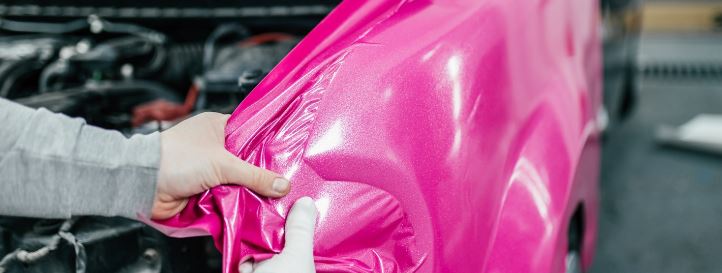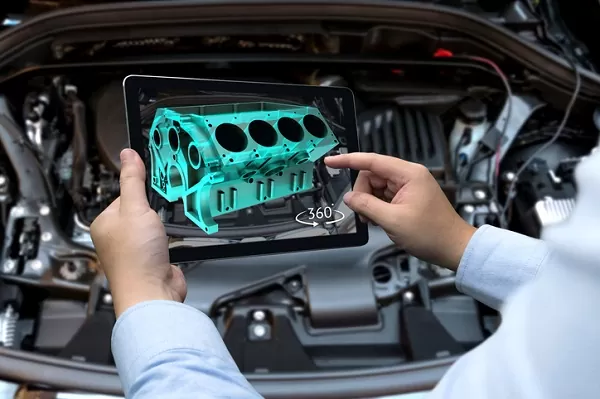“New cars all look the same nowadays!” If you’ve ever heard people make this complaint about modern cars, you might have dismissed it as something a Boomer would just complain about, but in fact there’s quite a lot of evidence to support this. The fact is that the world of car coloring has never been more limited and vanilla than it is now in 2022.
To prove just how vanilla it is, you need only look at America’s most “popular” car colors, just FIVE of which make up 87.4 percent of all cars in the US:
- White – 23.9%
- Black – 23.2%
- Gray – 15.5%
- Silver – 14.5%
- Red – 10.3%
It’s no wonder then that so many people are interested in the idea of a color change for their car. But how does it work? In today’s blog, we’re exploring all the why and the how surrounding car color change.
Why Are Colors Limited? Why Do People Make Changes?
The first question we ask here helps to answer part of the second question. One reason people want to make color changes to their car is that OEM colors are so limited and common. But why is that? The biggest reason behind limited color choice is production cost and efficiency. From the buyer’s perspective, colors like white, black and gray are desirable because they are the only colors that don’t cost additional cash!
OEMs charge anywhere from $350 to $2000 for color choices depending on the make, model, style of your car, as well as the color profile you’ve chosen. For instance, metallic and pearlescent paints cost more than more regular block colors. When people aren’t willing to pay these prices, they go for the standard offering, which is invariably one of those top 5 colors.
Another reason color is limited is for production capacity. Companies like Tesla, for example, have cut back from offering 10-11 different color options back in 2015-2016, to offering just 5 colors today. The reason for that was that having to change up colors so much to meet different orders was too time consuming and costly.
Car Color Change – What Methods Are Used?
When it comes to a color change, the only ways to get a comprehensive change all over the vehicle are:
- Vehicle respray
- Vinyl wrap
Respray Vs. Wrap – Process and Cost
Even though the processes are very different, the ultimate costs of getting either of these processes done to change the color of your car will cost roughly the same — anywhere from $2000 to $4000. Respraying can be the cheapest option if you are respraying from one simple color into another, but will become more costly if you want more specialized finishes like metallic or pearlescent finishes.
Respray
To respray a car, there are five big steps that have to be taken before one particle of new paint can even go onto the surface, namely: cutting, sanding, priming, rust freeing, and fixing. In short, the existing paint has to be fully removed (cutting), and then the surface sanded down and smoothed out, ready for priming. The priming stage involves coating the sanded metal surface to ensure the paint will bond with the surface properly.
Beyond that, there’s also “rust freeing,” which refers to using mixed chemicals to clean the car’s surface and remove any signs of rust, and “fixing,” which is mending damaged parts of the car before repainting starts. In other words, your car has to be almost reset to a factory manufacturing state before the respraying can start. This is part of the reason why it’s so expensive. If you could just spray a new coat over the top and then clear coat it, it would be simpler and probably cheaper.
Vinyl Wraps
The process of applying a vinyl wrap is arguably simpler than that of respraying, but simpler doesn’t mean that it isn’t careful, precise and time-consuming, and that all adds to the labor costs. Applying a vinyl wrap is essentially applying a new-color skin to your car that acts both as an outward color change and a protective coating at the same time. It works like paint protection film, only the finish isn’t clear like regular film is.
The main benefit of vinyl wraps is that you can reverse the process easily enough just by removing the vinyl wrap. There’s no guarantee, however, that removing the wrap wouldn’t cause minor damage to the original paint, which will then need touching up. Preserving the original color, however, can add to value since the wrap protects the color from discoloring UV rays and contaminants that would otherwise diminish it. The result is that when you restore the original color, it looks like a brand-new car!
Car Color Change and the Law – Where Things Can Get Complicated
One further area to be careful with when it comes to car color is how it might impact you legally. There have been some famous court cases in the US on this subject. One in particular was Van Teamer Vs. State in 2013 in which a driver appealed drug charges which all started with a police officer pulling his car over because the color didn’t match the official record given to the police for that license plate.
Van Teamer was originally pulled over because of that color discrepancy, and the drugs subsequently found. His defense team alleged that the initial cause for pulling over the car was insufficient because it was not required by Florida law at the time for Van Teamer to have reported the color change in his car. The case went on and on, back and forth, with some courts supporting Van Teamer’s assertion, but higher courts ultimately rejected it and said that the discrepancy was reason enough to believe that something untoward might be going on.
It seems that it is not a universal requirement to have your new car color reported to the DMV after you’ve done it, but we can also see that it’s a good idea. If Van Teamer had done that, he likely wouldn’t have drawn the attention of the police and thus wouldn’t have been discovered for his other vices.
Conclusion – Is Car Color Change Worth It?
There is certainly a lot to think about when considering a new color for your car. The most important ultimate question at the end of it all is “is it worth it?” Can you justify the expense if the total to get the job done is a significant fraction of your car’s total worth? Is it worth risking the integrity of the original paint to get a vinyl wrap? Might a color change affect the resale value of the car unless you spend even more money to put it back to its original color again?
The important thing should always be whether or not you feel happy and comfortable in purchasing the color modification. If you own the car, hate the original color, and would feel better and more confident driving a car of another color, then go for it. Always weigh up the expense and benefit before going ahead with it. In some cases, a new car might be more economical.
Go Home








[…] are quite a lot of pervasive rumors that do the rounds when it comes to the question of car colors. Some, for instance, that certain colors of car will cost you more to insure? Another one — and […]